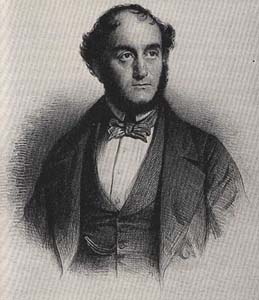The Esdaile State


History
Hypnosis was already known and used under various names thousands of years ago. It has been called everything from Yar-Phoonk (in a Hindi dialect) to Voodoo, and Magic, and has been used in incantations since the beginning of human kind.
Before the days of Mesmer, it was called Magnetism. Then its name was changed to Mesmerism, until Braid came along and originated the words hypnosis and hypnotism (and later tried to change the name to “monodeism” when he realized that hypnosis was not sleep, after all).
Hypnotic Surgery
Dr. Esdaile, who lived in Victorian times, was able to perform remarkable feats of surgery. It is said on good authority that he did every type of surgery known at the time – including amputations, abdominal surgery, and various types of suturing for assorted wounds.
Some books report that he did over three hundred deep abdominal surgical procedures in this state which was then completely unknown in medicine. Mortality in surgery in Esdaile’s day was fifty percent. Esdaile was able to reduce this mortality rate to eight percent by the use of his techniques, and his patients recovered more quickly and easily than the average surgical cases of his day.
When he came back to England, in his lectures he tried to produce the state before audiences of medical men. He didn’t realize that their very resistance would prevent them from entering the state. Doctors ridiculed him, calling him fake, charlatan and quack. He died bitterly disappointed.
Understanding the Esdaile State
 In order to understand the Esdaile state, let’s make a side-step to a stage hypnotist who has worked with thousands of people. Every now and then such an entertainer would encounter a remarkable thing which was called the Hypnotic Coma because the people who entered this state appeared to be in a coma.
In order to understand the Esdaile state, let’s make a side-step to a stage hypnotist who has worked with thousands of people. Every now and then such an entertainer would encounter a remarkable thing which was called the Hypnotic Coma because the people who entered this state appeared to be in a coma.
They didn’t move, they didn’t speak, they simply didn’t respond to anything. They would take no suggestions of any kind, including the one to come out of the state.
These coma subjects presented a problem because they not only did not participate in the action but, sitting there in the coma state, they distracted the audience. They were a nuisance. He had to devise ways of getting rid of these people.
How could he do it since they would not get up and walk off the stage? To carry them off would be disastrous.
He was forced to develop techniques to meet the situation, and he eventually found several different ways of getting problem subjects out of the coma state. Sometimes these methods could be quite lengthy.
He never realized, of course, that he had inadvertently stumbled into the Esdaile state.
Dave Elman, the first to understand the Esdaile State
 Elman started asking questions to the subjects and quickly found out that the coma state was one of euphoria and that the subject merely didn’t want to be disturbed.
Elman started asking questions to the subjects and quickly found out that the coma state was one of euphoria and that the subject merely didn’t want to be disturbed.
That was the reason they wouldn’t come out of it. They had never had such a pleasant experience and didn’t want this enjoyment to be interrupted.
Now, all one had to do was to say to the subject who was in the coma state, that if he didn’t obey the instructions and rouse himself, he could never be hypnotized again.
This was so effective that the subjects roused themselves instantly, and thereupon the coma no longer presented a problem.
Elman also found out that the patients were completely anesthetized, just as Esdaile had claimed they would be. He also knew that they were completely immobilized.
You couldn’t get them to raise an arm or a leg. You couldn’t induce them to open their eyes.
The people who went into the hypnotic coma became catatonic. If you lifted the leg of a subject, for example, it would stay in any position you put it into and would remain there indefinitely. It didn’t matter how awkward a position you put it into.
There was no rigidity in the limb; it felt just like wax and when you moved a leg it felt just as though you were moving wax, except that it remained in whatever position you moved it to.
How to induce the Esdaile State?
according to Dave Elman.
Step one: Get the subject into the somnambulistic state
Then explain that there is a basement to relaxation, a bottom floor, and you want to take the person down to this bottom floor.
Take him down to floor A, and you will find he is able to voice the letter A quite plainly. Tell him that in order to get down to floor B, he will have to relax twice as much as he did on floor A.
When he gets to floor B, he may find difficulty in saying the letter B out loud, but tell him to do his utmost to say it out loud. Some patients will fail to be able to do it. This is a good sign.
Now, using the same procedure, take him down to floor C, at which point he should not be able to move his lips sufficiently to form the letter C.
Test One
When you are sure he is at floor C, without giving suggestions of any kind for anesthesia, take a pair of allis clamps or towel clips, and make a test for anesthesia. Don’t use a word of suggestion for this, if it is necessary to give suggestions for hypnotic anesthesia, you don’t have the coma state. When the patient has passed the test for anesthesia, he is ready for test number two.
Test Two
Ask him to try to move a large group of muscles such as an arm or leg. If he is unable to move the big muscles, he is ready for the third test. This should involve a small group of muscles such as those around the eyes.
Test Three
Ask him to try to open his eyes. If he does, he is not in the coma state, and you must take him down a flight further until the eye muscles will not work. In somnambulism when the patient tries to open his eyes you will see a movement of the muscles even though the eyes don’t open. But in the true coma state, those tiny muscles don’t work at all, and you see no movement whatever.
Test Four
Your fourth test should be for catatonia. Realize that catatonia can be obtained in the lightest state of hypnosis. Therefore, it means nothing unless it is the fourth test you make in the coma state. When a patient passes all of these four tests in the exact order given, you may be sure you have the true hypnotic coma and can proceed from there. In your test for catatonia, no suggestions should be given. The catatonia must arrive by itself, without suggestions of any kind. Never go on to a further test until the patient has passed the first one.
Don’t make test two until the patient has definitely passed test one; don’t make test three until the patient has passed tests one and two, and so on.
Esdaile State Obtained
When you obtain the Esdaile state, you will notice that the patient is truly incapable of taking a “physical” suggestion. When he is asked to raise his arm, the muscles may quiver. Then movement ceases. We have found that many patients, after coming out of the coma, are certain in their own minds that they followed the suggestions of the operator, and did raise the arm as requested. Remember, they can hear and understand every word you say.
In the true state of coma, though the patient’s physical activities are immobilized, he truly cannot follow physical suggestions much as he might wish to do so – he is quite capable of taking “mental suggestions’ – in which there is no physical movement.
Doctors have proved this in various ways. They have taken patients suffering from headaches, dysmenorrhea, and many other functional symptoms, put them into the coma state and given them suggestions for the relief of these symptoms. The patients did not have these symptoms at the time of induction. The suggestions were given as post-hypnotics, for the relief of these symptoms, quite successfully.
Fast Esdaile State
Later, one of his students devised a shortcut to the above-mentioned method, “All I do is get the physical relaxation; then I take them down three flights, and they give off all four signs of the coma, and when I work on them, I have dental anesthesia without any suggestions having been given for it.”
Ending the Esdaile State
The only thing one needs to do is whisper in the subject’s ear, “If you don’t open your eyes when I tell you to, you can never have this state again.”



